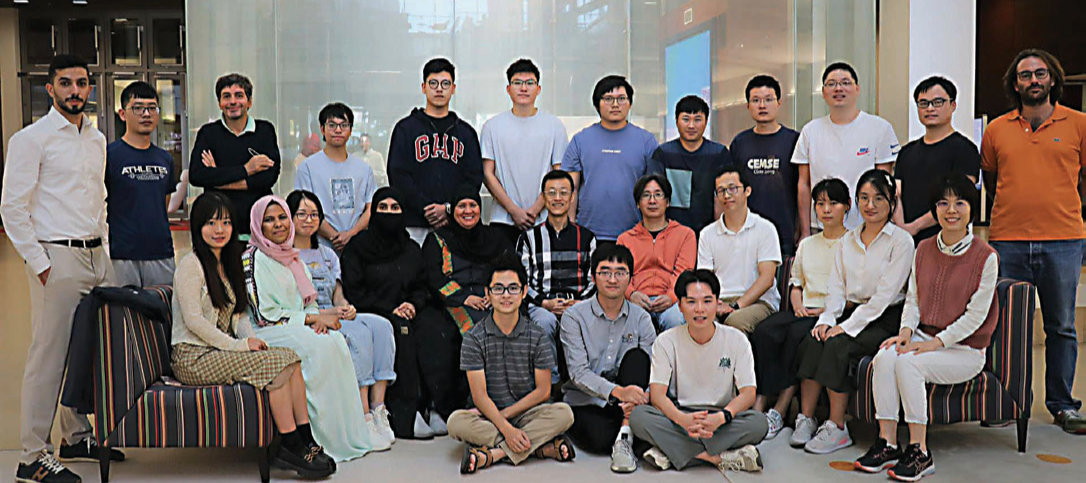How a Saudi university is using artificial intelligence to transform the diagnosis and treatment of skin diseases
RIYADH: To improve the efficiency and effectiveness of dermatological care, experts from the King Abdullah University of Science and Technology in Saudi Arabia have created a revolutionary new diagnostic system, SkinGPT-4, which uses the power of artificial intelligence.
Research lead Xin Gao, professor of computer science, co-chair of the Center of Excellence for Smart Health and chair of the Bioinformatics Platform at KAUST, says the goal of SkinGPT-4 is to detect, diagnose and identify appropriate skin treatments. diseases.
Developed in partnership with Yuekiao Zhou, a PhD candidate at KAUST who is the first author of SkinGPT-4, Gao says the technology could provide a potentially life-saving service to patients, especially those in rural areas where there is often a shortage of trained dermatologists.

“Those specific challenges in dermatology led to the creation of SkinGPT-4,” Gao told Arab News. “The variability in skin presentation and the need for specialized knowledge to properly identify and treat these conditions highlighted the need for an advanced AI-driven solution.”
The team identified the need for such a solution after recognizing the limitations of traditional diagnostic methods and the potential of AI, especially large language models (LLMs) such as the eponymous ChatGPT, in improving the accuracy and efficiency of dermatological diagnosis.
“With SkinGPT-4, users can upload their own skin photos for diagnosis, and SkinGPT-4 can autonomously determine the characteristics and categories of skin conditions, perform analysis, provide treatment recommendations, and enable interactive diagnosis,” Gao said.

Gao and the KAUST team behind the AI dermatologist SkinGPT-4. (delivered)
SkinGPT-4 diagnoses conditions that have different visual characteristics, such as acne, rosacea, melanoma, psoriasis, basal cell carcinoma, eczema and more.
Gao said the development of SkinGPT-4 began with data collection and preprocessing, followed by model training and validation. “The team collected a large dataset of dermatology images and patient records to train the AI model,” he said.
“One of the significant challenges was the integration of different types of data, including images and text, which required collaboration between computer scientists and dermatologists. A multidisciplinary team worked together to ensure that AI can effectively interpret and analyze images of skin diseases.
IS NOT ITKNOW?
• SkinGPT-4 diagnoses conditions that have different visual characteristics, such as melanoma, psoriasis and eczema.
• Uses a combination of computer vision algorithms, large language models and natural language processing.
• The technology could help doctors and patients in rural areas where there is often a shortage of trained dermatologists.
SkinGPT-4 uses a combination of computer vision algorithms, LLM, and natural language processing (NLP), which enable programs to understand human languages.
“The model processes dermatology images using a vision transformer (ViT) to identify patterns and features indicative of different skin conditions,” Gao said.
“ViT is aligned with an LLM called Llama-2-13b-chat on our dataset with a custom two-step training strategy.” In this way, LLM Llama-2-13b-chat can understand images of skin diseases and enable conversation with the patient in natural language.
This section contains relevant reference points, posted in (Opinion field)
SkinGPT-4 may be particularly useful in diagnosing rare skin conditions that may not be readily recognized by general practitioners.
“A patient with an unusual rash could be quickly and accurately diagnosed with SkinGPT-4, which is trained on a large number of dermatological images, including rare conditions,” Gao said.
“Additionally, for the management of chronic skin conditions such as psoriasis, SkinGPT-4 can monitor progression and response to treatment, providing ongoing support and adjusting treatment plans as needed.”
Researchers hope SkinGPT-4 will be a game changer for remote or underserved areas where there is a shortage of dermatologists.
“For example, in a rural community where the nearest dermatologist is hundreds of miles away, a patient has a suspicious lesion that could be a rare form of skin cancer,” Gao said.

Properly trained, AI can provide immense help to doctors. (Shutterstock image)
“Using the SkinGPT-4, a local healthcare professional can take a high-resolution image of the lesion and enter the patient’s medical history into the system.” SkinGPT-4 analyzes the patient’s image and information, quickly providing a preliminary diagnosis and recommendations for further action.”
And as SkinGPT-4 evolves, Gao said the system will learn from its own mistakes through continuous learning and feedback mechanisms.
“By analyzing misdiagnoses and making corrections, the system can improve its algorithms and improve its accuracy over time,” he said. “This iterative learning process ensures that SkinGPT-4 evolves and adapts to new data and new trends in dermatology.
However, Gao is keen to stress that SkinGPT-4 is not designed to completely replace dermatologists. Instead, the program is designed to serve as a development and optimization tool, which functions as an assistant in facilitating communication between patients and physicians.
“Our aspiration for SkinGPT-4 is to provide patients with more information about skin conditions while offering physicians valuable assistance in the diagnostic process.”


